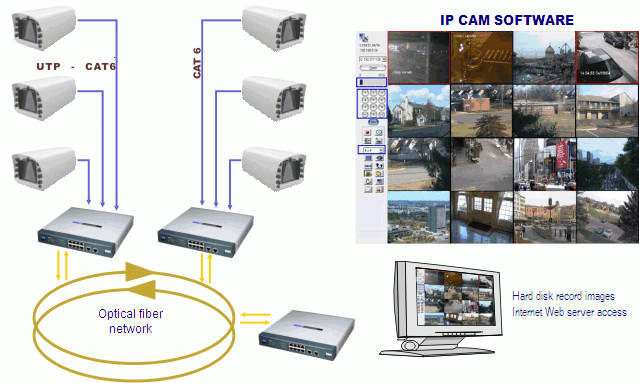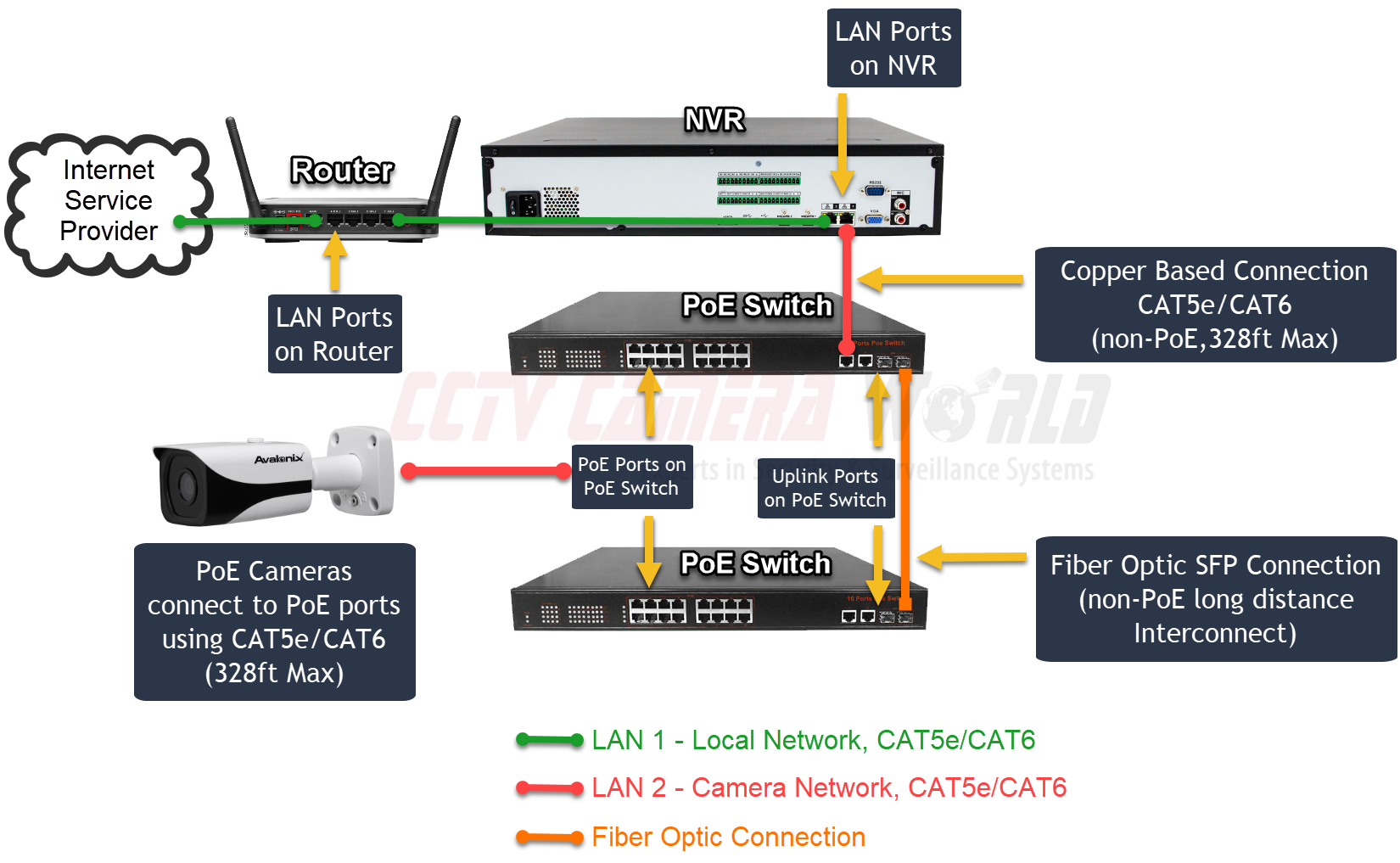The Key Benefits of Implementing a Fiber Optic Security Camera in Your Monitoring Setup
Exactly How CCTV Cameras With Fiber Optic Result Boost Long-Distance Monitoring
CCTV cams furnished with fiber optic result represent a significant advancement in long-distance monitoring modern technology, providing unequaled benefits over standard systems. By leveraging the buildings of light transmission with fiber optics, these electronic cameras make sure high-definition video clip quality continues to be intact throughout extensive distances while properly alleviating electromagnetic interference - cctv fibre optic cable.

Understanding Fiber Optic Technology
Fiber optic technology is increasingly used in long-distance monitoring applications because of its remarkable ability for data transmission. This technology uses thin strands of glass or plastic fibers to transfer data as light signals, dramatically lowering the depletion generally related to conventional copper wires. The integral residential properties of fiber optics enable the transmission of huge quantities of information over significant ranges without loss of top quality, making it an excellent selection for applications requiring trustworthy communication.
The concept of complete internal representation promotes the effective transmission of light within the fiber, making certain high transmission capacity and rate. Unlike electrical signals in metal wires, optical fiber are immune to electro-magnetic interference, boosting the integrity of data transmission. This characteristic is specifically valuable in atmospheres with high degrees of electric sound, such as industrial settings or metropolitan locations.
Furthermore, fiber optic cable televisions are lighter and much more adaptable than their copper equivalents, which streamlines setup and minimizes structural lots. With their longevity and resistance to ecological variables, optical fiber are well-suited for outdoor applications, thereby prolonging the reach of keeping track of systems. Consequently, fiber optic technology is coming to be a cornerstone in modern surveillance options, effectively dealing with the challenges of long-distance surveillance.
Advantages of Fiber Optic CCTV
Making use of fiber optic modern technology in CCTV systems offers countless benefits that enhance monitoring capacities. Among the primary advantages is the capability to transmit high-definition video over fars away without substantial signal degradation. Unlike standard copper wires, optical fiber can preserve video clip quality over extensive runs, making them optimal for large buildings or remote surveillance areas.
Additionally, fiber optic cable televisions are less vulnerable to electro-magnetic interference, which can misshape signals in conventional systems. This guarantees more clear photos and undisturbed solution, vital for safety and security tracking. Fiber optics are naturally extra protected, as intercepting signals needs specialized tools, thus providing an added layer of defense against unapproved accessibility.
The light-weight and portable nature of fiber optic wires likewise simplifies setup, making it possible for easier transmitting through limited spaces and minimizing overall labor costs. Their durability makes them resistant to ecological aspects such as wetness and temperature level variations, extending the lifespan of the surveillance system.
Last but not least, fiber optic systems can support a better number of electronic cameras on a single network, enhancing sources and supplying scalability for future development. These advantages make fiber optic CCTV systems a premium option for modern monitoring requirements.
Contrast With Typical Systems
When contrasting CCTV systems, typical setups usually fall brief in numerous crucial locations, especially in terms of range and signal stability. Traditional coax systems typically encounter considerable signal deterioration over cross countries, restricting reliable tracking ranges to about 300 feet (cctv fibre optic cable). Yet limit, image quality decreases, resulting in possible dead spots and decreased security efficiency
On the other hand, fiber optic systems maintain signal honesty over much better distances, frequently going beyond numerous miles without loss of high quality. This is largely because of their ability to transfer information as light signals, which are less prone to electromagnetic disturbance than electrical signals utilized in standard systems.
Additionally, standard systems require much more comprehensive upkeep and troubleshooting because of their susceptability to environmental aspects such as moisture and electromagnetic view publisher site noise. Fiber optic systems, conversely, offer improved resilience and reduced upkeep expenses, as they are less susceptible to damages.
Applications in Long-Distance Surveillance
The benefits of modern CCTV systems in keeping signal honesty over long ranges open up a vast array of applications for long-distance monitoring. One significant application remains in more helpful hints city security, where communities release fiber optic CCTV systems to check public areas, improving security and hindering criminal task. These systems supply continuous, top quality video clip feeds that are important for effective police and emergency situation response.
One more important application is in commercial settings, where remote surveillance of producing processes and hazardous areas is important. Fiber optic CCTV can hold up against extreme settings and transfer data over fars away without loss of quality, permitting real-time oversight and decreasing threats to employees.
In addition, important framework such as airport terminals, trains, and pipelines gain from long-distance CCTV monitoring. Security teams can oversee huge areas from streamlined control spaces, making sure fast reaction to any incidents.
Moreover, in farming setups, farmers make use of long-distance CCTV to monitor crops and animals, aiding to boost productivity and security. Overall, the versatility and integrity of fiber optic CCTV systems make them vital across different fields, making it possible for extensive surveillance remedies tailored to details requirements.
Future Patterns in Security Innovation
Just how will improvements in modern technology reshape the landscape of surveillance? The future of security technology is poised blog for significant improvement, driven by innovations such as man-made knowledge (AI), maker understanding, and side computer. These innovations enable real-time data analysis, permitting quick identification of prospective hazards and enhanced situational awareness.
AI-powered analytics will enhance the precision of face acknowledgment systems, minimizing incorrect positives and making it possible for extra efficient tracking of people. Additionally, the integration of Internet of Things (IoT) devices will certainly promote a smooth network of interconnected security systems, improving tracking capacities throughout huge areas.
One more trend is the change towards cloud-based storage space remedies, which supply scalable information administration and availability. This will allow companies to save huge quantities of video information without the limitations of physical storage space, while guaranteeing that details is easily retrievable.

Conclusion
To conclude, CCTV cams equipped with fiber optic output represent a significant innovation in long-distance monitoring abilities. The application of fiber optic innovation ensures high-definition video clip transmission over extensive ranges without quality deterioration, while likewise providing immunity to electromagnetic disturbance. The light-weight and adaptable nature of these systems helps with streamlined installment and source optimization. As surveillance innovation remains to advance, the adoption of fiber optic options will likely play a crucial role in enhancing safety across diverse applications.